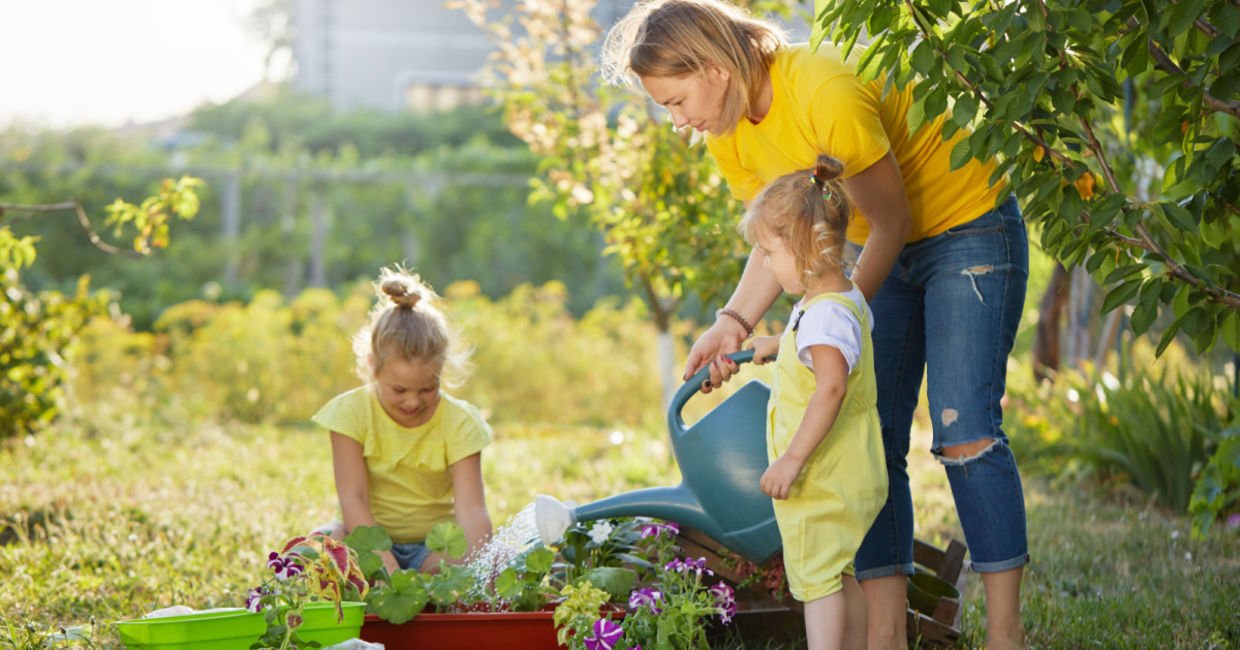
(oes / Shutterstock.com)
Summer is time to celebrate the great outdoors. For those who love gardening and appreciate nature, July is a great month to plant for a fall harvest. This month, add a special dimension to your outdoor space by trying random — also known as chaos – gardening.
Chaos gardening is about experimenting, playing, and enjoying surprises! It is basically a scattering of different seeds all together in one area of the garden, according to AgronoMag. For a variety of color and height, you can use a combination of vegetable and flower seeds.
How to create a chaos garden
Use a vacant sun-filled garden bed or a kiddie pool. Add soil and rake the area. Then take a collection of seeds, soak them together in warm water for 24 hours, dry them, and then mix them in potting soil. Spread the seeds over your prepared garden bed, cover with more soil, water, and wait.
It is interesting to see which seeds sprout and where they end up growing. Aside from the surprise factor, growing a variety of vegetable and flower seeds is healthy for the plants as it creates diversity, according to Rural Sprout.
When you have a mixed variety, the plants are more disease and pest resistant. As the vegetables and flowers will be different sizes and heights, they will also crowd out weeds, which means less work for you. A variety of plants growing together will also attract a diversity of pollinators, enriching the dwindling insect population.
View this post on Instagram
Seeds to plant in July
July is a great month to plant leafy greens and root vegetables, recommends Yahoo!!life. Combine a selection of your favorite veggie seeds in a large bowl. You can use carrot, radish, beet, scallion, turnip, cabbage, lettuce, dwarf French beans, and green tomato seeds. To boost the nutrient density of your crop, you can add kale, Bok choy, and Swiss chard seeds.
For extra color, add in some echinacea, poppy, calendula, cornflower, and gladiolus seeds. Swish them around, then plant. This method is akin to a gardener’s playground. As the plants sprout and grow, you will be continually surprised by the wild variety of heights and colors.
Using native plants
Another approach is to use a combination of native plant seeds, according to MSN. These plants are both drought and pest resistant, and are bound to flourish in your garden. This also means less work for you.
Creating a chaos garden is a gardener’s way of mimicking nature’s creative magic. It is about letting go, taking chances, sitting back, and relaxing while nature does her work. And once your chaos garden is flourishing with a variety of vegetables and blooming flowers this fall, you will be reminded that Mother Nature knows best!
YOU MIGHT ALSO LIKE:
7 Tips for a Better Garden
Growing Vegetables Into the Winter
5 DIY Ideas to Create a Gorgeous Vertical Garden







